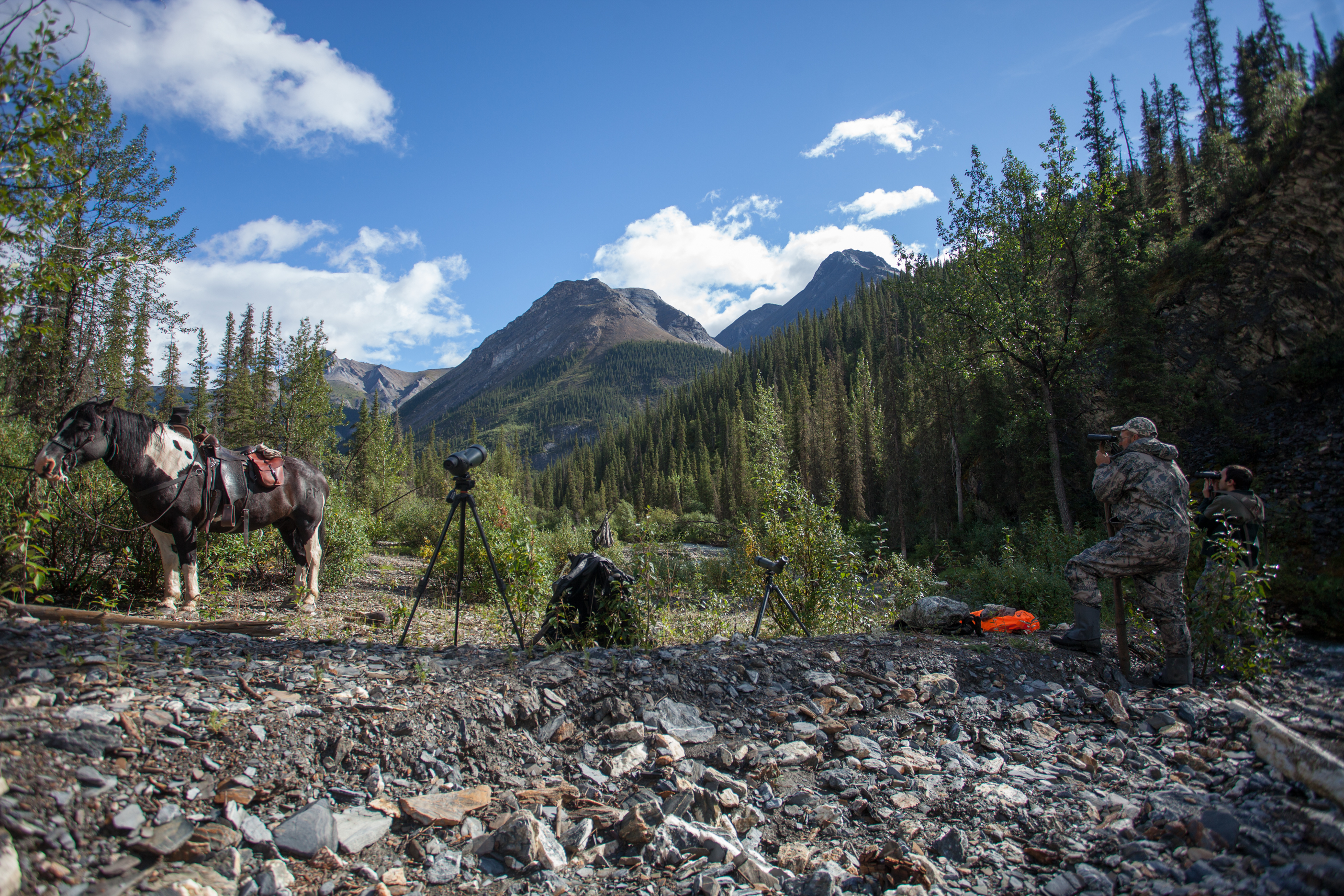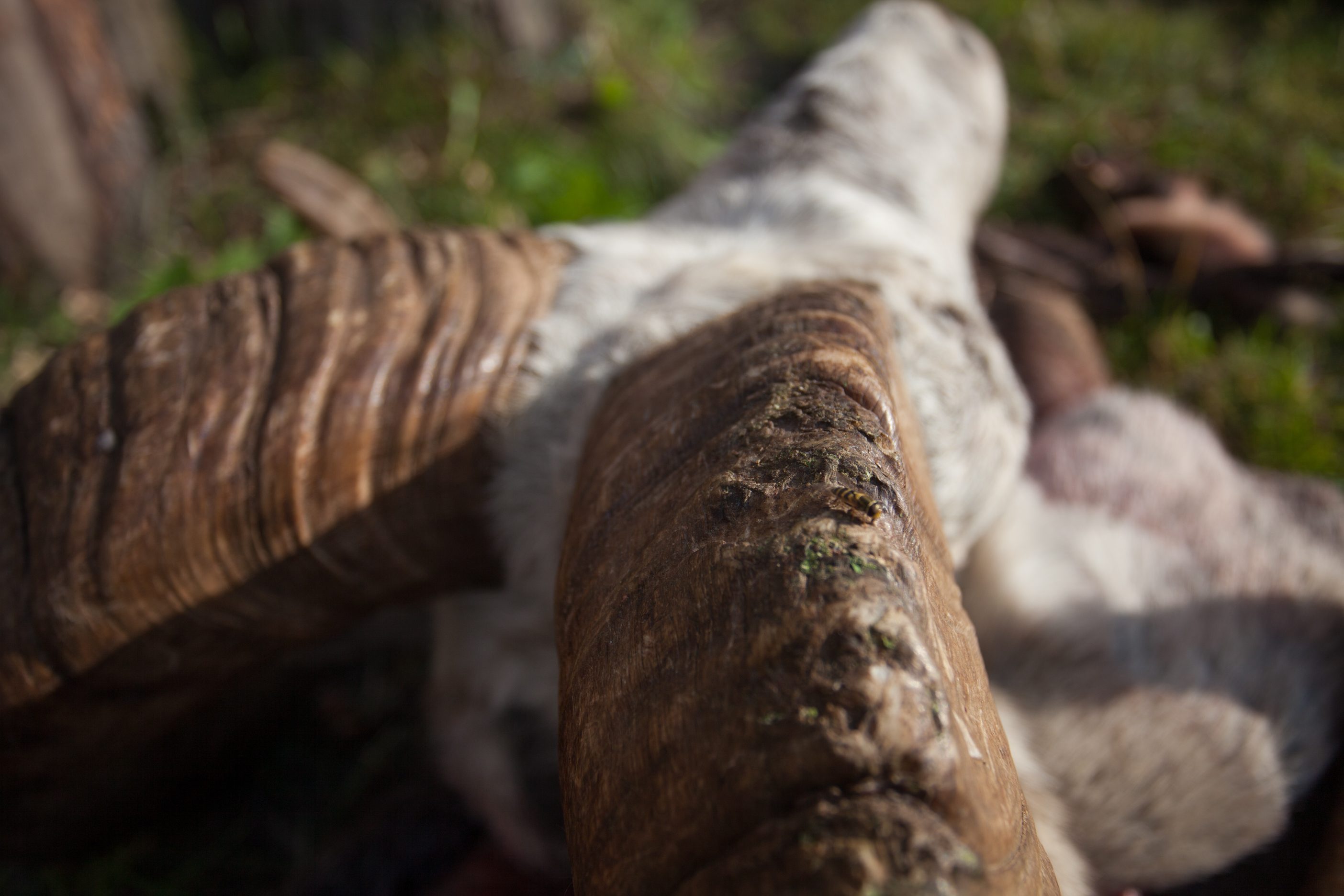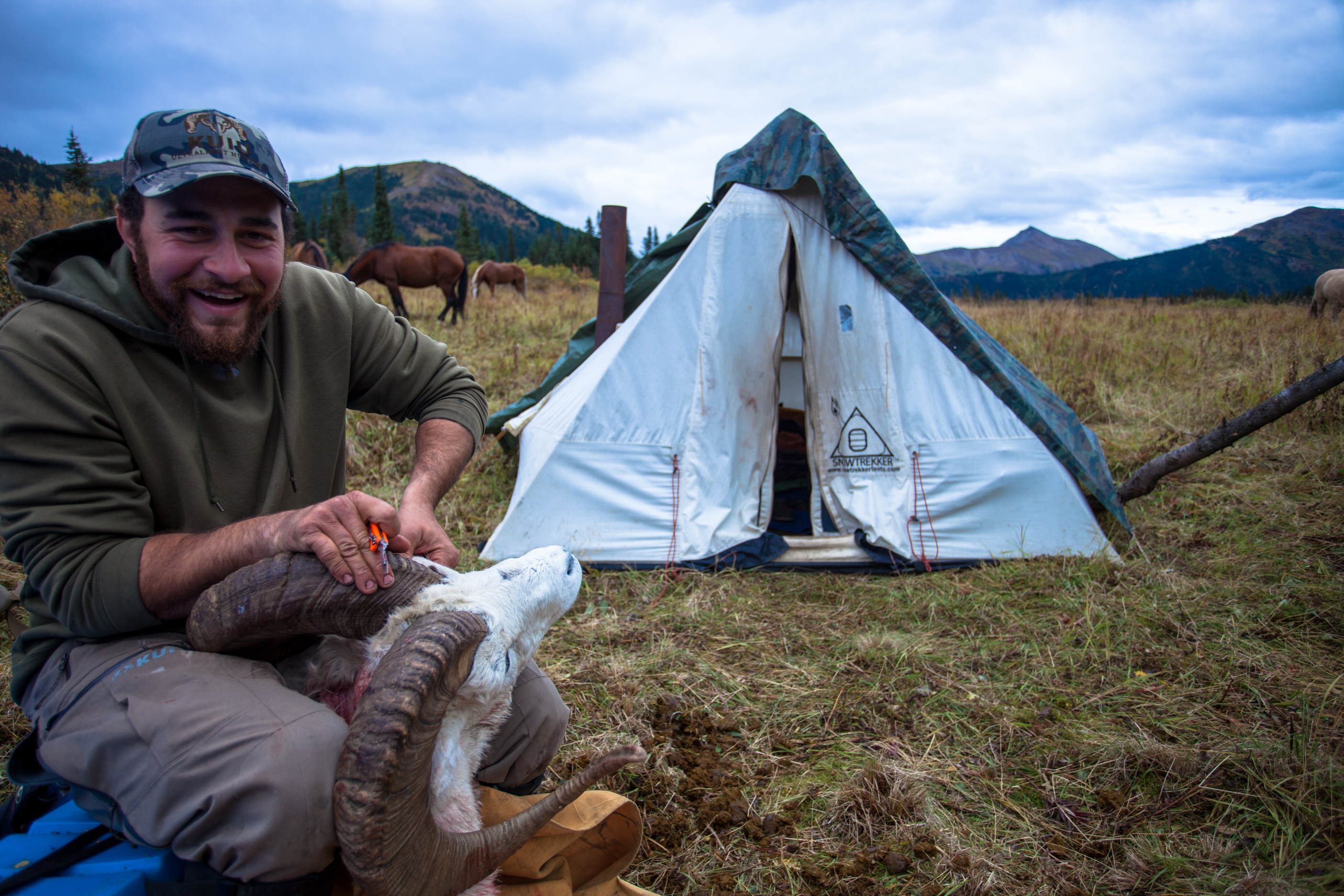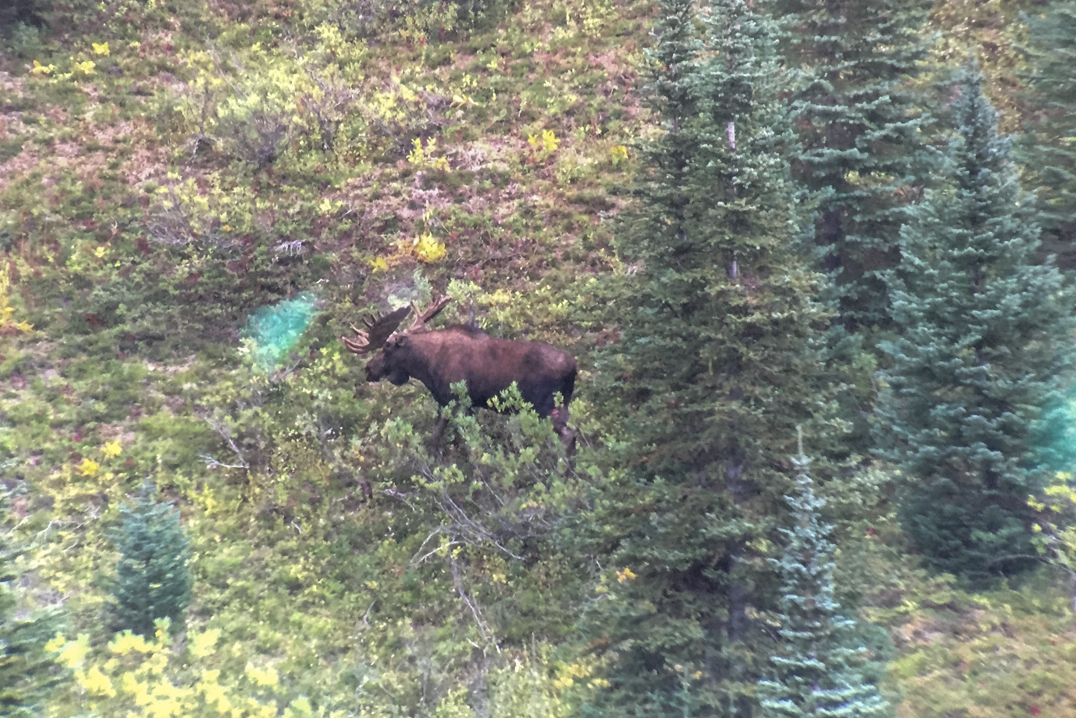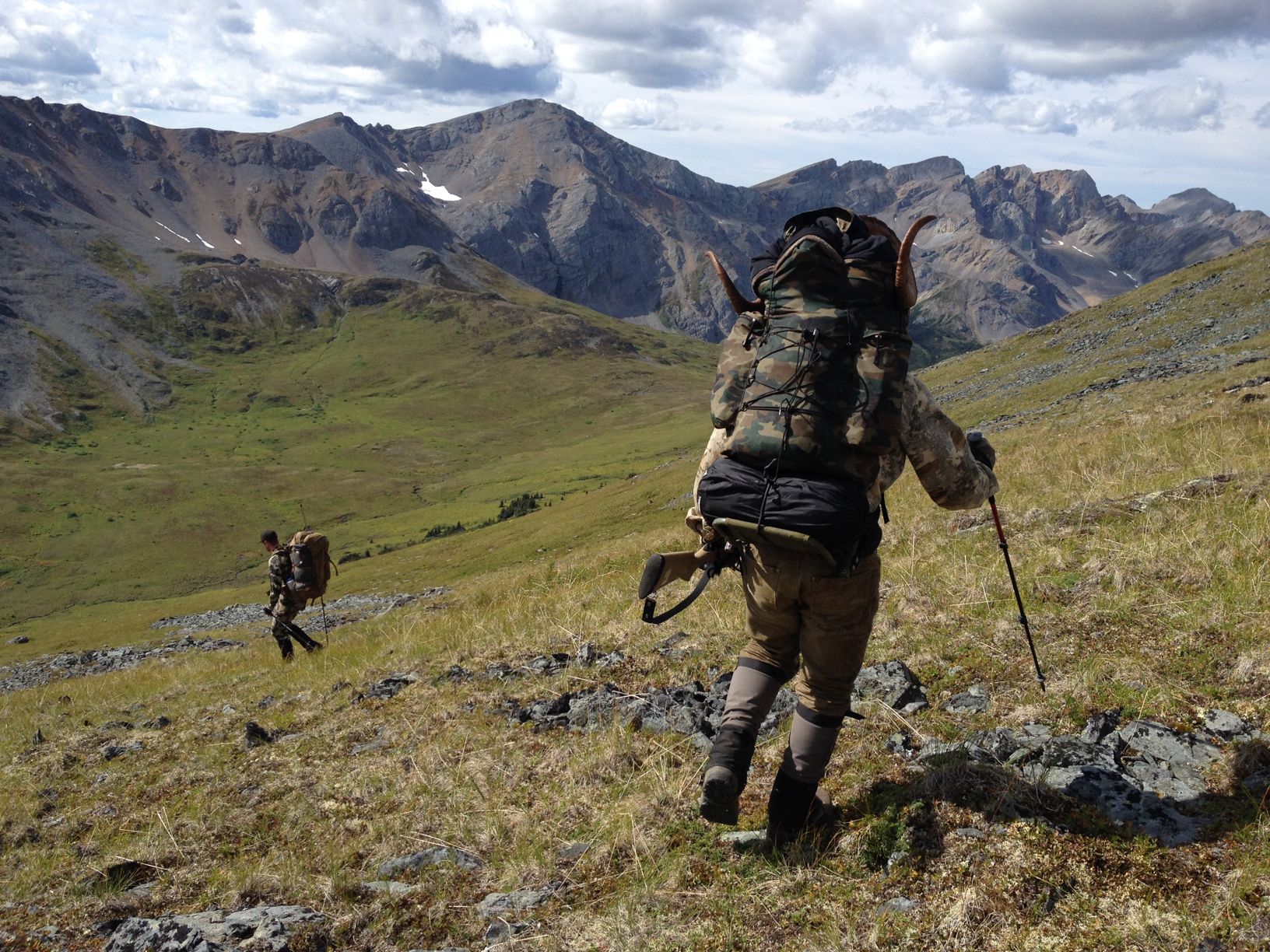We exist in the era of globalization and information. Never before has it been so easy to access information, regardless of its proximity to your age, or more specifically, location. For most of us, this has a more direct application to our day to day lives than it does our hobbies or interests. Apple’s Siri, Amazon’s Alexa… You name it, and there is a product or app to make your life easier, and thus “better”.
To be clear, this is not an “I was born 100 years too late” article. While I do lament the growing pains that come with technology, I appreciate the fact that I don’t have to wear gumboots while sheep hunting anymore. Or that I have the ability to stay in communication while spending extended periods in the mountains guiding. It’s great — some of the time. As applied to hunting, tech has seen both sides of this swinging pendulum. The ability to build community and share knowledge is unprecedented, however, with this comes the aforementioned growing pains — backcountry access, location overexposure, and most importantly, a lack of understanding of the local management needs or species-specific management practices.
In the last five years, I have met an increasing number of new hunters of differing age. Some of them have come into the hunting traditions of their family later in life. Others have no direct familial ties to hunting, seeking to pursue a wild and sustainable way to consume meat. Some of these hunters have achieved great success in a short time, often through a mixture of sheer will-power, perseverance, and an aptitude for research.
Occasionally, and unfortunately, with a shortened learning curve comes a shortened understanding of the importance of upholding certain management practices. This can be seen often in new hunters who immediately latch onto the moniker “meat hunter” — as if to say the rest of us aren’t putting meat in the freezer as well. Sure, there are certain populations of animals that can sustain a less selective, more liberal harvest. One that includes younger males and females — typically black bear and deer — to be hunted. Those abundant species and liberal seasons are where most new hunters cut their teeth, and rightfully so. Any seasoned hunter is aware of the cumulative hours it takes to get the knowledge and skills that are required to see consistent success on mature animals in the field.
Lacking the overall understanding of hunting, be it the heritage and history or simply the experience to grasp hunting in a more complete picture, these newer hunters fear the stigma that is often associated with selectively hunting — “trophy hunting” if you will. There is also the natural progression of the hunter, the earlier stages often falling under the pressure to feel successful. To feel as if you can actually call yourself a hunter. Social media highlight reels likely do not help the matter, but that is a whole other can of worms.
Perhaps the most commonly illustrated and distributed version of this idea is the Five Stages of Hunting. Originally defined by Dr. Robert Jackson and Dr. Robert Norton of the University of Wisconsin – La Crosse, the study found that the majority of hunters can be grouped into five categories. Some hunters may never move outside of a few of the stages, and others may skip them along the way. Even so, they did find these all these stages represented across the study. I will not delve into the specifics of each stage in this article, as they have been covered thoroughly elsewhere, but the stages follow as such:
- Shooter Stage
- Limiting Out Stage
- Trophy Stage
- Method Stage
- Sportsman Stage
The intersection of this — new hunters, the 5 stages, management practices — is through technology. It both connects us and alienates. Helps us learn and grow as hunters and meet mentors. Helps us share our stories. These are fundamental and deeply ingrained rituals of the hunt. A net positive you might say, but where this all becomes problematic is when the question of management ethics is posed.
I recently had a conversation with a good friend on the importance surrounding the location. One of his takeaways was that it could be detrimental to give away a “honey-hole” to a newer hunter. Not just because they will be robbed of the critical skills that one acquires when scouting and learning an area yourself, but also potentially detrimental to the game population it holds. Without a greater understanding, or perhaps respect, for the often unique management needs of an area, overharvest or underage (unsustainable) harvest becomes a reality.
More than any other species in the province, I see this as an issue that plagues mountain ungulates, specifically sheep and mountain goats. In the case of goats, there are a number of LEH (limited entry hunt) opportunities with incredibly low odds, often enticing to the uninitiated. Much like the discussion we had around giving up location and the potential for negative outcomes, technology and access to information has allowed hunters to jump further into the backcountry while still remaining in an earlier “stage of hunting”.
The argument could be made that hunter recruitment is mission critical right now and that the more interest in backcountry hunting there is, the more money there is for conservation and preservation in these areas. However, conservation is about conserving a resource, and potential exploitation of over-harvest or underage harvest negates any potential benefit of recruitment.
So what does age have to do with any of this, you might be wondering? Among the many regulations that are in place surrounding hunting, maturity is often used as a tool of sustainable management. The idea is simple: conservative harvest of mature males — having met or surpassed their breeding prime — in a population will not hinder that population’s growth. In certain cases, such as bears, there is evidence to suggest that it might, in fact, aid the population growth.
Generally, the regulations in British Columbia approach this by imposing an antler point or full curl restriction. Six-point elk, four-point mule deer, tri-palm or ten-point moose… you get the picture. In regards to thinhorn sheep, our regulations require a ram to achieve full curl or an age of eight years “as evidenced by true horn annuli”. Some people may be under the assumption that these seasons are in place to maintain a “trophy quality”, but the intended result is to manage based on maturity.
In the case of the mountain goat, this becomes difficult as it neither has antlers, nor easily counted annuli, and horns of similar size are present in both male and female members of the species. Similar to the full curl regulations surrounding thinhorn sheep, I am of the belief that the legality of nanny harvest with mountain goats is only in place to ensure that honest mistakes are not unfairly penalized. The importance of billy harvest has been highlighted in various regulations, British Columbia’s states:
“Minimizing the female (nanny) harvest of mountain goats is an important conservation action. Previously, the Ministry of Forests, Lands, Natural Resource Operations and Rural Development has addressed concerns with the harvest of females through voluntary compliance among hunters to select a male mountain goat (billy). While the proportion of females in the harvest has decreased, there continues to be concerns over the high harvest of female mountain goats in some areas. In order to address this concern, a regulation was implemented in 2010 that states “It is unlawful to hunt a female mountain goat accompanying a kid or a female mountain goat in a group that contains one or more kids.” This regulation does not protect all female mountain goats as a solitary female mountain goat, or a female mountain goat within a group of goats that does not contain kids, would still be legal to harvest.”
– British Columbia Hunting & Trapping Regulations Synopsis, 2018-2020
This is where the importance of age class comes in, in my opinion. Through selective hunting for mature animals, the impact of the harvest is diminished, even in the case of mistaken identification. By studying body language and shape, facial structure, and having knowledge of the areas genetics it is possible to focus on mature animals, passing on the younger ones in the herd. The Rocky Mountain Goat Alliance has taken upon themselves to make education and goat identification an integral part of their mission, regularly posting goat identification quizzes on their social media, as well as a video on goat identification that can be viewed on their website. The book, Beast The Color Of Winter by Douglas Chadwick is as well a powerful tool for identification, and understanding mountain goat behaviour. For hunters with less experience, this can be a tough pill to swallow. The planning and effort that goes into a backcountry hunt for mountain goat or sheep is no small feat. Coming up short on a long gruelling hunt is often bitter, and the pressure to cut a tag can weigh heavily on you.
Heavier though, than the pressure to see success, is the responsibility we have to act as stewards of the wilderness. To protect the wild spaces and animals we cherish so much and sometimes swallow our pride. Even if it means coming home with only a picture of that seven-year-old full curl ram. Our responsibility as hunters, participants in what our government calls ‘consumptive use’, is to be advocates and leaders in conservation. To focus not only on the legal minimum while hunting, but take into consideration the long-term impact of our actions and strive for sustainability.
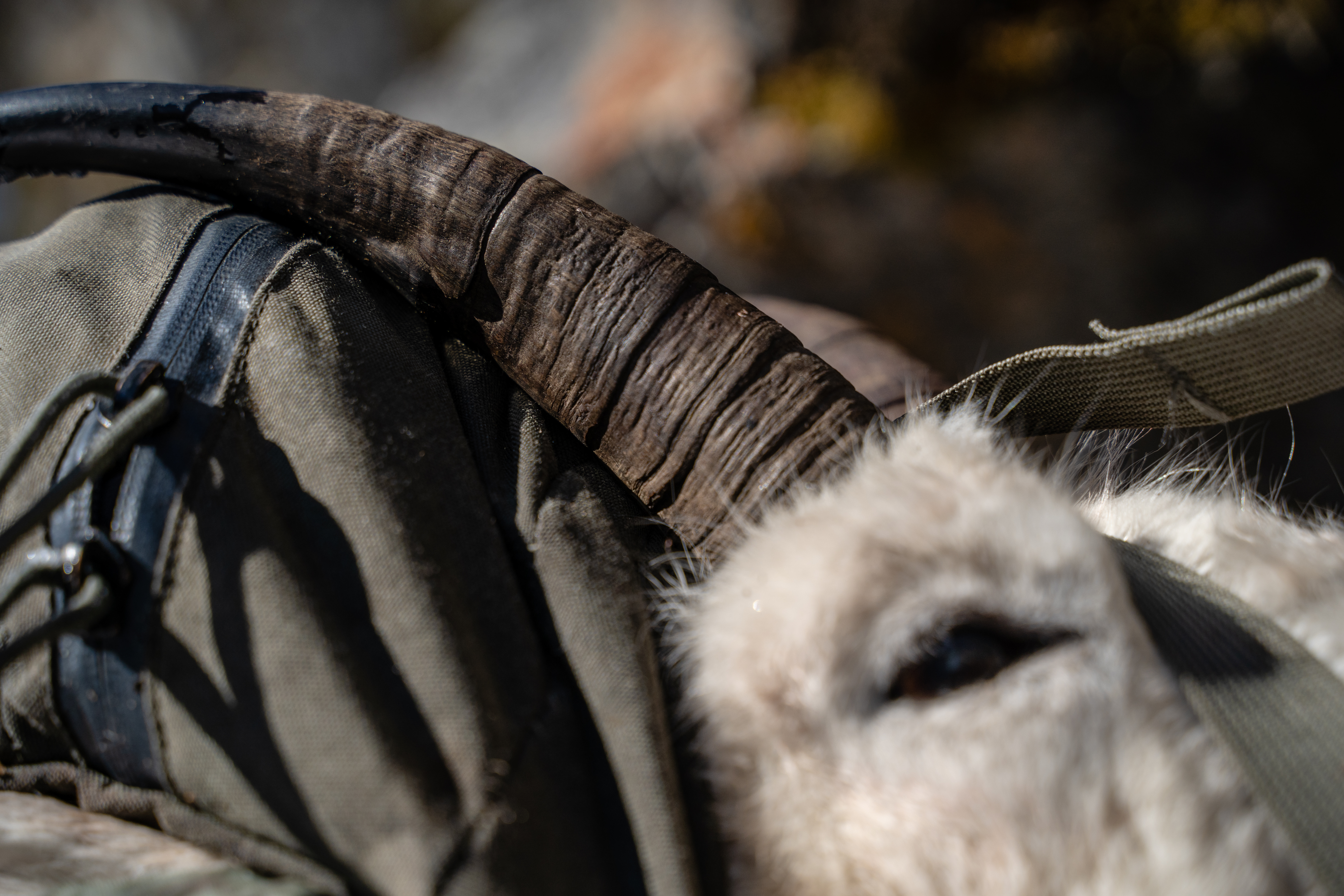
Photo: Trousdell Media
For most of us, the fall is a special time of year. Plans that have been concocted months prior take action, the towering mountains and their inhabitants beckoning us. Many of us pay thousands of dollars to shave ounces out of our pack weight, and burn brain time determining which new piece of gear will be best. But, perhaps this is the season to burn brain time on something more important than which camo puffy you need. Focus instead on educating ourselves and our peers on the importance of sustainable, age class harvest. I often think of a quote — engraved on a plaque that sits above my desk — and its application to life, and hunting:
“A Hundred Years After We Are Gone And Forgotten
Those Who Never Heard Of Us
Will Be Living With The Results Of Our Actions”
– O.W. Holmes –


